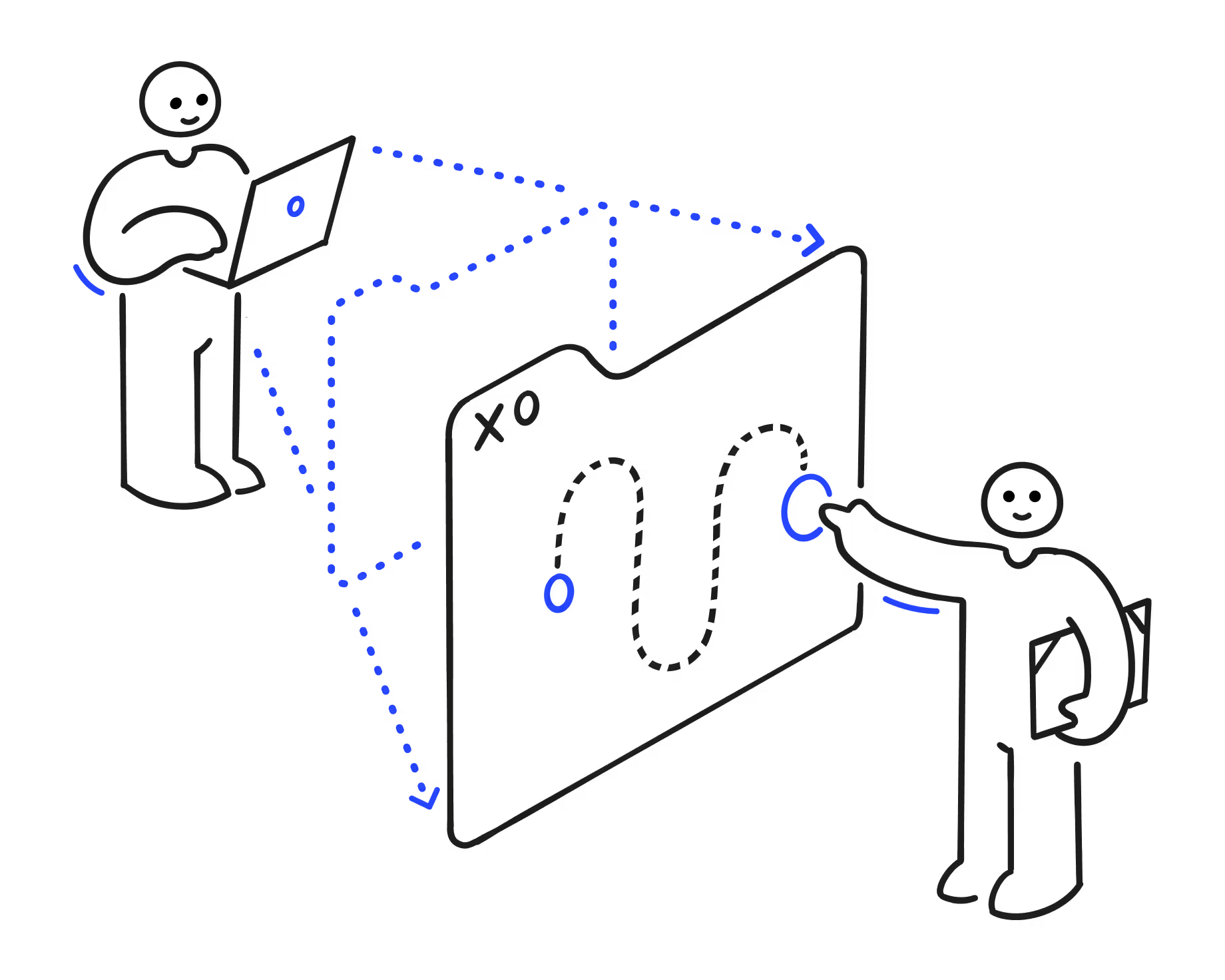New hire onboarding surveys: What to ask and why it matters
.png)
Discover Workleap Officevibe's benchmark report on 12 key employee engagement metrics

The first days, weeks, and months at a job set the tone for a new hire’s experience at the company and in their role.During this time, using onboarding surveys is an easy way to pull feedback from new employees.
These quick employee surveys provide insight into what’s working and how your company culture feels to newcomers. The result is a smoother onboarding process, happier new employees, and data that helps you fine-tune first impressions.
Onboarding questionnaires: Benefits and importance
An onboarding survey is your secret weapon for gauging what works and what doesn’t in your organization's onboarding process. This short employee survey typically goes out the week or month after their formal onboarding to capture honest feedback from your new hires. Follow-up onboarding surveys can also be sent out for the first few months on the job to continue gathering data from new team members.
Employee onboarding surveys help with HR planning by providing insight into what processes were helpful and which to skip next time. This means new hires feel confident and connected from day one as they learn more about your company, code of conduct, and expectations.
Below are three of the top benefits of using onboarding surveys.
Improve the employee experience
A great onboarding survey transforms the process from a checklist to a conversation, giving new hires a moment to detail what worked well and what needs work.
These early insights let HR teams gather real input so they can tailor orientation to meet your employees’ needs.
Increase employee engagement
When onboarding surveys include open-ended survey questions, they improve communication and employee engagement. New team members can share their ideas while shaping and refining the onboarding process from the start. This sense of involvement boosts trust and transparency in your company.
Optimize the onboarding process
Remember that collecting employee feedback isn’t the endgame: Acting on it is. Use surveys to identify weak spots in the onboarding experience, from unclear roles to inconsistent training.
The results from surveys provide a glimpse into what’s needed to help future new hires feel more supported. This might mean automating the onboarding process, trying out software solutions, or making a point to provide employee recognition early on.
Track your success and identify challenges
Strong survey tools help HR teams assess whether onboarding is successful by measuring job satisfaction and monitoring trends before they evolve into high turnover.
Collecting this information helps you develop employee onboarding that addresses new hires’ concerns and helps future new employees succeed.
10 best practices for creating onboarding experience survey questions
Building onboarding surveys that deliver real insights means focusing on the right questions to help your new hires feel heard. Here’s how.
1. Know what you want to learn
Before you write a single question, be clear on your purpose. Are you trying to improve employee satisfaction or reduce turnover? Your main goal shapes the kind of feedback you need and makes your survey impactful.
2. Ask the right questions
Provide a healthy mix of open-ended questions and structured ones to give space to rate on a 1-5 scale or provide a couple short sentences.
Need a shortcut? Workleap Officevibe’s onboarding survey templates make it fast and easy to collect employee feedback.
3. Keep it short and simple
Long surveys kill employee motivation faster than a glitchy login on their first day. And when new hires can complete the survey quickly, they’re more likely to respond honestly. Aim for 5 to 10 targeted survey questions that take less than five minutes total to complete.
4. Use confidentiality to build trust
If you want authentic answers, prioritize making people feel safe. Reassure your employees that their answers are confidential and will only be used to improve the onboarding process.
You don’t need full anonymity, which can create issues in spotting team-level trends. But you should protect employee identities as much as possible.
5. Use different types of data
Quantitative data is all about numbers, scales, and ratings, while qualitative feedback explains the “why” and “how.” Both are necessary to cover all your bases, so pair multiple-choice or scaled questions with open-ended ones in your survey.
6. Brand your employee onboarding survey
Since your onboarding survey is part of your company culture and not just a random HR experience, it should look and sound professional and representative of your brand. A little personalization goes a long way, so infuse the survey with the company’s voice, tone, and visuals.
7. Involve diverse perspectives
When you’re designing your onboarding survey, gather feedback from across departments, including managers and team members. The context you get from these conversations will help you create a survey that gathers information you can actually use.
8. Time it right
Send your first onboarding survey after week one to discover your new hires’ first impressions, then re-survey them at 30, 60, and 90 days. This spaced out timeline will give you a glimpse into how new employees adjust over time.
9. Measure what matters
After you implement changes received from survey results, track impact. Are employee engagement, satisfaction, and retention trending higher over time? Depending on your findings, you may need to further adjust and improve.
10. Improve the onboarding survey
Review your employee feedback regularly and refine your survey questions as your organization grows. Each round of new hires is a chance to learn, adjust, and make your onboarding process better.
Onboarding survey questions for new hires
No two new hires experience onboarding the same way. That’s why your onboarding surveys should include a mix of questions that approach different angles of the employee experience.
Open-ended questions
Some of the most important onboarding survey questions for managers and HR to ask are open-ended questions. These give you the ability to understand where friction is happening while providing a space for honest feedback.
- What part of the onboarding process felt the most valuable?
- How confident do you feel in your new role after the first month?
- What’s one thing that would have improved your first week?
- Describe your first impression of our company culture.
- How supported do you feel by your manager and team?
- What surprised you about our employee onboarding experience?
Rating or scale-based questions
These types of survey questions let your new hires rate their experiences using a numbered or descriptive scale. For example, one to five, or “poor” to “excellent.”
Rating and scale-based questions help you measure how people feel about specific parts of your onboarding process without making answers overly complicated.
- How satisfied are you with your orientation experience?
- How well did the training prepare you for your job?
- How clearly were your role expectations communicated?
- How well did your onboarding sessions reflect our company culture?
- How helpful are your onboarding materials?
- How comfortable do you feel asking your manager questions?
1. 5-point Likert scale statements
A five-point Likert scale measures responses to statements, with responses ranging from strongly agree to strongly disagree.
- I feel confident performing my daily tasks.
- I understand what our team’s goals are and how my work contributes to them.
- I received the right amount of support during employee onboarding.
- I feel aligned with the company’s culture, mission, and values.
- I trust my managers to support me.
- I feel like part of the team.
2. Binary questions
Binary questions, also called true/false or yes/no questions, help you find out if the onboarding process was completed properly.
- Did you receive clear information before your first day?
- Were you introduced to your team in your first week?
- Did you meet with your manager during onboarding?
- Did you get all the resources you need to confidently perform your role?
- Do you understand how you’ll be evaluated?
3. Multiple-choice questions
These survey questions give your new staff a set of answers to choose from, making it easy to respond quickly. HR staff can also compare the results at a glance.
- Which part of the onboarding process helped you feel the most prepared?
- Team introductions
- Training sessions
- HR orientation
- Tool and system access
- What was the most challenging part of your first week?
- Learning new software
- Understanding company policies
- Managing workload
- Meeting performance expectations
- Which resource did you find the most helpful during onboarding?
- Employee handbook
- Video tutorials
- One-on-one meetings with manager
- Peer-review buddy system
- How would you describe the onboarding pace?
- Too fast
- Just right
- A little slow
- Much too slow
- What kind of training works best for you?
- Live sessions
- Self-paced modules
- Shadowing team members
- Written guides
- What part of onboarding needs improvement?
- Pre-onboarding communication
- Tool and system access
- Clarity about job expectations
- Follow-up after the first week
Find onboarding survey examples on Workleap
Using onboarding surveys lets HR see where the process sparks excitement and where it may need a reset. When you listen early and often, you build an employee experience that feels authentic and worth sticking around for.
If you’re ready to empower your HR department and new employees, Workleap Officevibe. Here, you can send recurring pulse surveys, create custom surveys, and gather AI-powered insights from an employee’s day one, to year one and beyond. With Officevibe, it’s easier than ever to build a happy, productive workforce.
Try Workleap for free today to experience a better way to onboard and nurture your team.
Give HR and managers the clarity, confidence, and connection to lead better every day.


%20(1).png)


.png)
.png)








